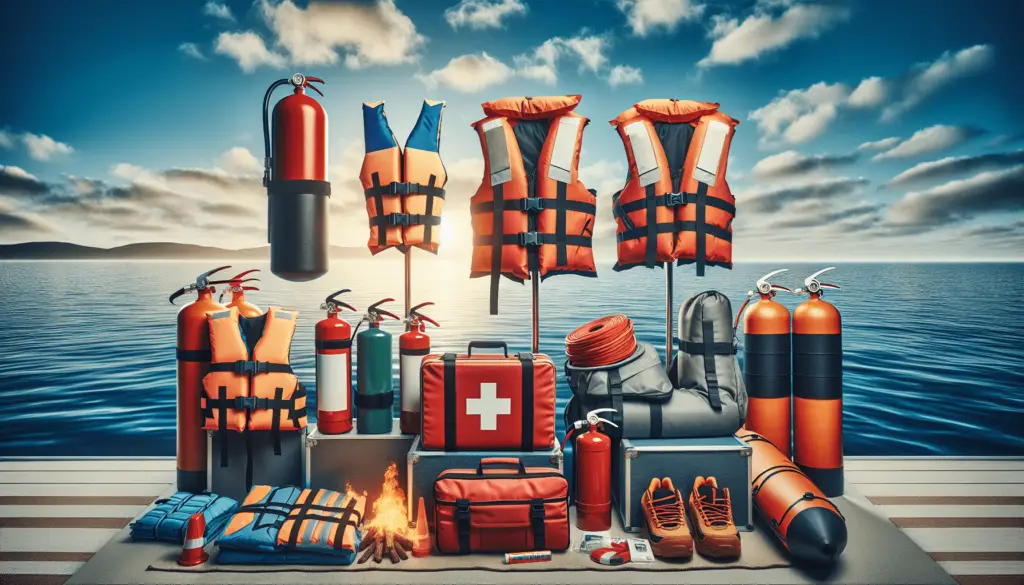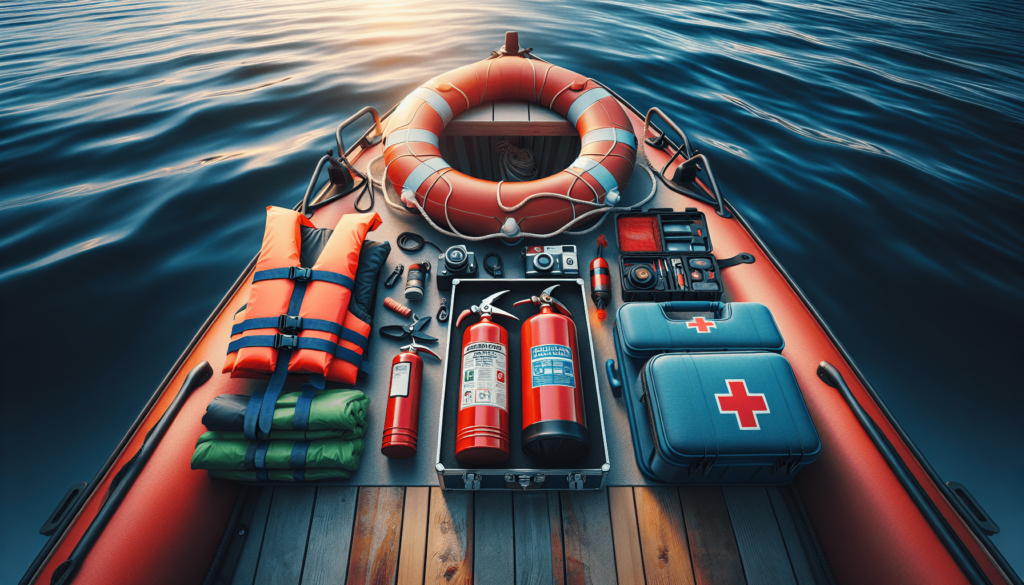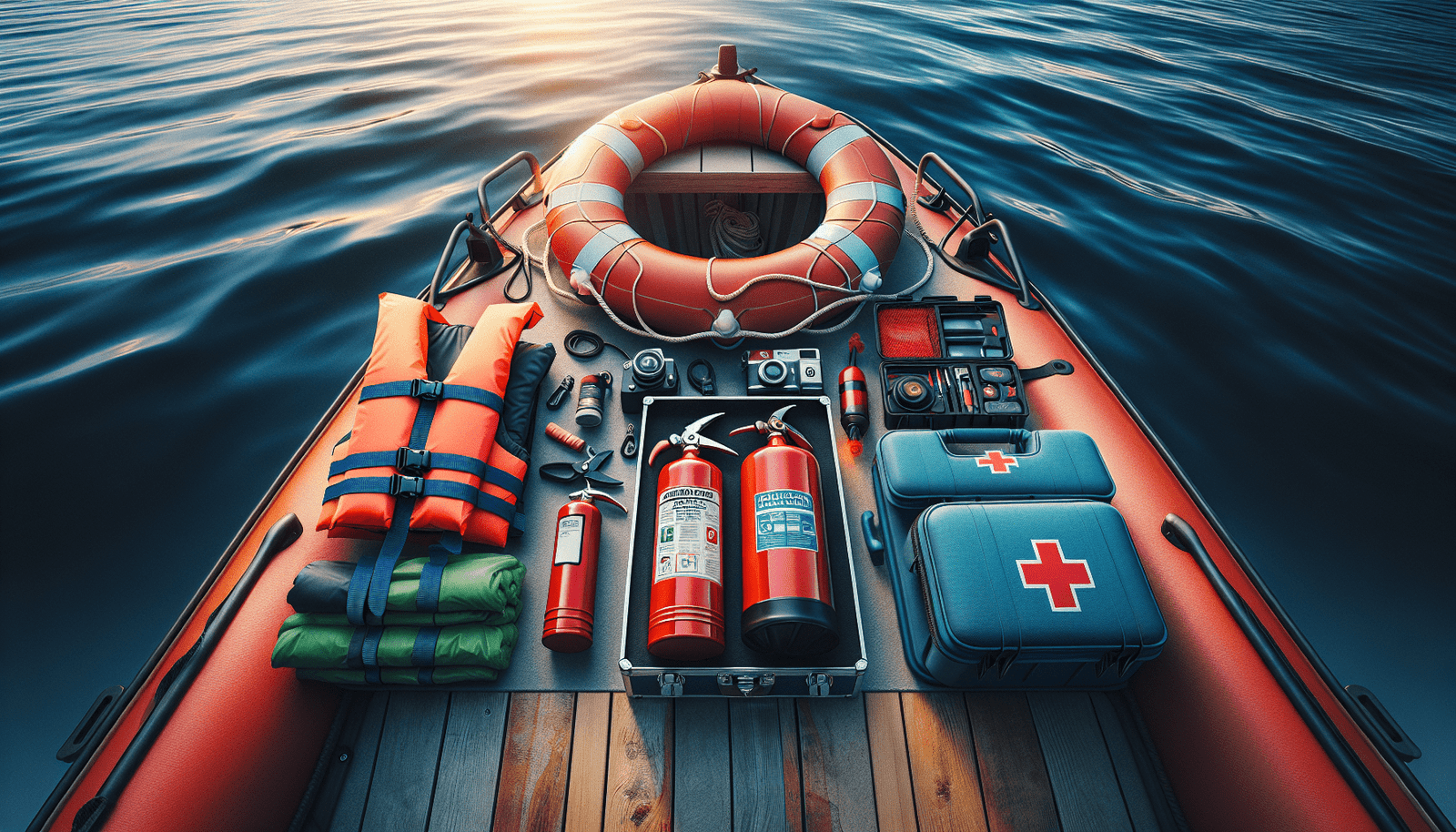Embarking on a voyage across the open sea, it’s crucial that you are well-equipped. While outfitting your boat, the safety equipment isn’t just a box to check — it’s the line between a smooth sail and potential disaster. In your hands, we present a trustworthy Buyer’s Guide: Choosing the Right Safety Equipment for Your Boat. It’s designed to be your compass, navigating you through the vast selection of gear, guiding you toward the vital, the reliable, and the best-fit for your seafaring needs. So, prepare to set sail confidently, knowing you’ve invested in the right safety provisions for your treasured vessel.

Understanding Marine Safety Regulations
Navigating the open ocean and even coastal waters demands more than just basic knowledge of the helm; it requires an intimate understanding of both international and local marine safety regulations. These guidelines, as dry as they might seem, form the very foundation of your seafaring adventures, ensuring that every journey is as safe as it is thrilling.
International maritime safety policies
The international maritime industry, dedicated to enhancing security and safety on the high seas, established several maritime safety policies. These regulations constitute frameworks for safe navigation, cargo security, and safety standards for life at sea. They consider the diverse geographic, climatic, and environment factors that affect maritime operations. By understanding these policies, you add an extra layer to the safety protocols aboard your vessel.
Local boating safety codes and regulations
Just as crucial are the local boating safety regulations. Like international guidelines, these are designed to make sure you and your crew can venture out with confidence. However, these local codes have more of an emphasis on managing recreational boating activities. They encompass an array of areas including docking, speed limits, right of way, licensing, and mandatory safety equipment. Knowing these allows you to blend seamlessly into the maritime community, respecting the norms while enjoying your escapades.
Importance of adhering to safety guidelines
Adhering to safety guidelines is anything but a tedious chore; it is a way of making every trip, from brief outings to long explorations, secure and enjoyable. By observing these regulations, you safeguard not only your own life but also those of others around you. It reduces the likelihood of accidents, mishaps, and violations that could result in hefty penalties or even loss of your maritime license.
Personal Flotation Devices (PFDs)
One of the key components of marine safety equipment are Personal Flotation Devices or PFDs. Their importance cannot be overstated when venturing out into the expansive waters.
Varieties of PFDs
There are several types of PFDs, each crafted for distinctive scenarios. Life jackets or vests are the most common, designed to keep you afloat in the water, but there are also buoyant vests and float coats. Automatic inflatable PFDs are perfect for calm, warm waters, while offshore life jackets have the advantage of keeping unconscious people afloat in rough waters.
How to select the right PFD
There’s no one-size-fits-all when it comes to PFDs. Choosing the right one depends on several factors like the type of activity you’re embarking on, water conditions, and duration of the voyage. Check for the U.S. Coast Guard-approved label, consider comfort, ease of use, and whether they suit all the users, particularly children and pets.
Importance and usage of PFDs
PFDs play a crucial part in ensuring safety, significantly increasing your chances of survival in case of an accident. They keep you afloat, save energy and even provide insulation in colder waters. It’s crucial that all aboard must wear a PFD, especially in adverse weather conditions or during adventurous pursuits like water skiing, kiteboarding or cruising the stormy waves.
Fire Safety Equipment
The open water is a vast, unbroken expanse with no immediate help. Having an effective fire safety strategy, which includes proper fire extinguishers, is essential to prevent a minor mishap from blowing into a catastrophic blaze onboard.
Types of Fire extinguishers
Based on the materials they are designed to combat, fire extinguishers are categorized into classes A, B, C, D, and K. For your boat, you’ll primarily need B (for flammable liquids) and C (for electrical fires) class extinguishers. They come in different sizes, so consider the size of your boat when choosing the right one.
Placement of fire extinguishers on a boat
An extinguisher, no matter how top-notch, is worthless if you can’t reach it during an emergency. Position them in strategic locations like the galley, engine room, and the main cabin where chances of a fire are higher. Have readily accessible ones on deck as well. Keep them serviced and always check for the validity of the maintenance tags.
How to use fire extinguishers correctly
Knowing the correct way to operate a fire extinguisher is vital. Remember the acronym PASS (Pull, Aim, Squeeze, Sweep). Pull the safety pin, aim at the base of the fire, squeeze the handle, and sweep side to side. Practicing this routine ensures you’re prepared for an unexpected fire.
Distress Signals
When all fails, having the ability to call for help can make all the difference. Distress signals are communication tools designed to attract attention and seek assistance in an emergency.
Visual distress signals
Visual distress signals can be pyrotechnic devices like flares or non-pyrotechnic ones including flags, lights, or dye markers. Pyrotechnic signals are highly effective during night or in low light conditions while non-pyrotechnic signals, such as orange smoke signals, are useful during the day. Remember to keep an ample supply of signals to ensure visibility over a more extended period.
Sound-producing devices
Sound-producing devices can be anything from a whistle, horn or a bell. They have an advantage in foggy or low visibility conditions and can be used along with visual distress signals for maximum effect.
Electronic distress signals
Last but not least, electronic distress signals, such as an Emergency Position Indicating Radio Beacon (EPIRB) or a Personal Locator Beacon (PLB), represent the pinnacle of maritime distress technology. When activated, they send your exact position to the search and rescue services, significantly reducing response time.

First Aid Kits
First aid kits, oftentimes underrated, complete any safety preparation. Given the distance to the nearest medical facility when you’re out at sea, a well-stocked first aid kit becomes your first point of medical support in case of injury or illness.
Essential items in a boating first aid kit
A standard boating first aid kit should comprise of bandages, gauzes, adhesive tape, antiseptic wipes, tweezers, and a first aid manual. The kit should also include medication for seasickness, sunburn, pain relief, and allergic reactions. All items should be packed in a sturdy, waterproof box to protect them from the elements.
Selection and placement of the kit
Select a kit based on the size of your crew, the length of your trip, and the medical proficiency of those aboard. Position it in an accessible location, away from places that might get wet or can be challenging to reach during an emergency. Everyone on board should know its exact location.
Dry and wet first aid kits
Depending on whether you expect to be in wet conditions or not, you may opt for dry or wet first aid kits. Dry kits are ideal for situations where you can keep the kit in a cool, dry place. On the other hand, wet kits are packaged in waterproof compartments and are suitable for situations where the kits could get wet.
Man Overboard Devices
The sea can be unpredictable, and the ‘man overboard’ situation is a harrowing scenario no one would want to experience. However, being prepared for such incidents is part of responsible boating.
Types of man overboard devices
There is a range of man-overboard (MOB) devices that can increase a person’s survival in the event of such an incident. From the traditional life ring, retrieval sling, to the more advanced MOB electronic device that triggers an alarm at the moment someone goes overboard. Moreover, portable devices, such as personal AIS (Automatic Identification System) beacons, can be attached to life vests.
Usage and efficiency of different devices
Different MOB devices have unique advantages and work best in different scenarios. Let’s say the throw bag; it’s optimal for a smaller cruising boat close to the person in the water. In contrast, an electronic MOB device is perfect for larger boats where instant detection is crucial.
Practices to prevent man overboard accidents
Prevention is always better than cure. Adhering to best practices such as staying tethered in tough weather conditions, having correct, non-slip decking, holding on to handholds when moving and using PFDs while on deck, can prevent man-overboard incidents drastically.
Navigation Lights
The open waters can turn disorientingly dark at the night. Navigation lights, thus, are not optional, but a mandated requirement when voyaging from sunset to sunrise or during periods of reduced visibility.
Importance of navigation lights
Navigation lights help you see and, as importantly, be seen by other vessels. They allow you to establish a clear line of sight, gauge the direction of approaching vessels, and assist you in taking appropriate measures to avoid a collision.
Types of navigation lights
There are several types of navigation lights, including sidelights, masthead lights, sternlight, and all-round lights. The type of lights needed and their positions are defined by the size and type of your boat.
Installation and maintenance of navigation lights
Navigational lights must be installed correctly and follow the specific requirements for range of visibility and arc of illumination as stated by maritime regulations. Regular inspection and maintenance, including checking the bulb, lens, and electric circuits, are essential to ensure they’re working correctly when you need them.
Handheld VHF Radio
Radio communication is an integral pillar of maritime safety. And while there are several options out there, nothing beats the reliability of a handheld VHF radio.
Value of a handheld VHF radio
A VHF radio not only provides a means of communication but is a powerful resource during a crisis. It gives you access to maritime communication channels, including the distress frequency Channel 16, weather reports, and is traceable for emergency location.
Choosing the right VHF radio
When choosing, consider factors such as water-resistance, battery life, range, noise-cancelling feature and user-friendly design. And if it has GPS and Digital Selective Calling (DSC), the two features that can be life-saving in emergencies, even better!
How to operate a VHF radio correctly
Operating a VHF radio requires basic knowledge like understanding the correct channel for different types of communications, knowing the emergency protocol, and using the proper language and etiquette. An understanding of the phonetic alphabet and standard vocabulary of maritime radio communication leads to better clarity and avoidance of misunderstandings.
Life Rafts
If the worst happens and you need to abandon your vessel, a life raft may be the only thing standing between you and the endless, unforgiving sea.
Types of life rafts
There are offshore, coastal, and inland water life rafts, each designed for different sea conditions and durations. Think about where you will be using these, the type of weather you may encounter, and the number of passengers that would need shelter in emergencies when choosing a life raft.
Selecting the right life raft
The life raft you select should have the capacity to hold all members of your team comfortably. Don’t choose a smaller raft to save on financial or storage costs. The raft should also contain emergency supplies, repair kits, and inflation systems.
Life raft maintenance and servicing
Life rafts, like most safety gears, need regular servicing and maintenance to stay reliable. It should be inspected annually by an approved servicing station. Remember not to exceed the raft’s service due dates.
Bilge Pumps
A last line of defence between your boat and unwanted water, bilge pumps work to rid your boat of excess water and keep it afloat.
Purpose of bilge pumps
A bilge pump’s primary function is to expel bilge water that may accumulate due to a leak, spray or heavy rain, keeping your vessel from sinking. They also help clear the workspace in case of machinery leakage.
Choosing and installing a bilge pump
Choose a bilge pump based on the size of your boat, the nature of your voyages, and the amount of water your boat is likely to take on. Yet, a larger pump’s capacity might be slowed down by narrow pipes, so also consider broad piping or an additional pump if necessary.
Maintenance of your bilge pump
Keeping your bilge pump well-maintained and free from any in-flowing debris is crucial for its performance. Regular checks should be carried out to test its working condition, clean the strainer, and ensure automatic switches trigger when they are supposed to.
Partnering your passion for exploring the vast air-blue boundary, where the ocean kisses the sky, with improving your safety knowledge and equipment, you get the perfect recipe for a joyous aquatic adventure. So, gear up, arm yourself with knowledge, and immerse yourself in the magnificence the water world has to offer, backed by confidence and preparedness.

